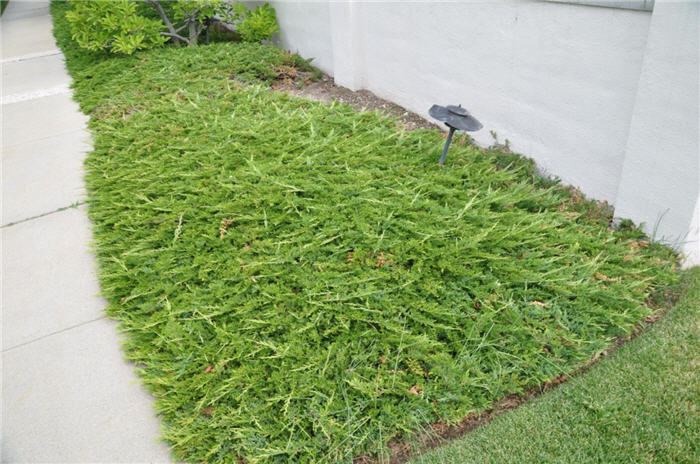| Botanical Name: Juniperus horizontalis | |
| Common Name: Creeping Juniper |

-
Anatomy
-
Culture
-
Design
Plant Type
Conifer, Shrub, Ground cover
Height Range
1-3'
Flower Color
n/a
Flower Season
n/a
Leaf Color
Green, Blue Green
Bark Color
Brown, Red
Fruit Color
n/a
Fruit Season
n/a
Sun
Full
Water
Low, Medium
Growth Rate
Moderate
Soil Type
Sandy, Clay, Loam, Rocky, Unparticular
Soil Condition
Average, Rich, Poor, Well-drained, Dry
Soil pH
Neutral
Adverse Factors
n/a
Design Styles
Formal, Mediterranean, Ranch
Accenting Features
n/a
Seasonal Interest
Winter, Spring, Summer, Fall
Location Uses
Background, Shrub Border, Parking Strip, Parking Lot, Raised Planter, Walls / Fences, With Rocks
Special Uses
Cascade, Container, Erosion Control
Attracts Wildlife
n/a
Information by: Stephanie Duer
Photographer:
Photographer:
-
Description
-
Notes
Creeping junipers are generally dense, low growing evergreen shrubs with long, flexible branches, growing about 1 to 2 feet tall and 4 to 8 feet wide. Color ranges from green to blue-green to steel blue, depending on the variety. This is a tough group of juniper and is well suited as a large area ground cover, or to cascade over walls and rocks. It can also be used to espalier or be staked up to create sort of an odd, upright, mounding juniper-art thing.
Grow in any soil that is well draining, including sandy, gravelly, or clay soils, but they must be well draining. Best growth in full sun. Once established, it tolerates dry soils and heat. Avoid shearing, as that will made the juniper woody and stiff; instead, prune selectively if necessary (see Guides).